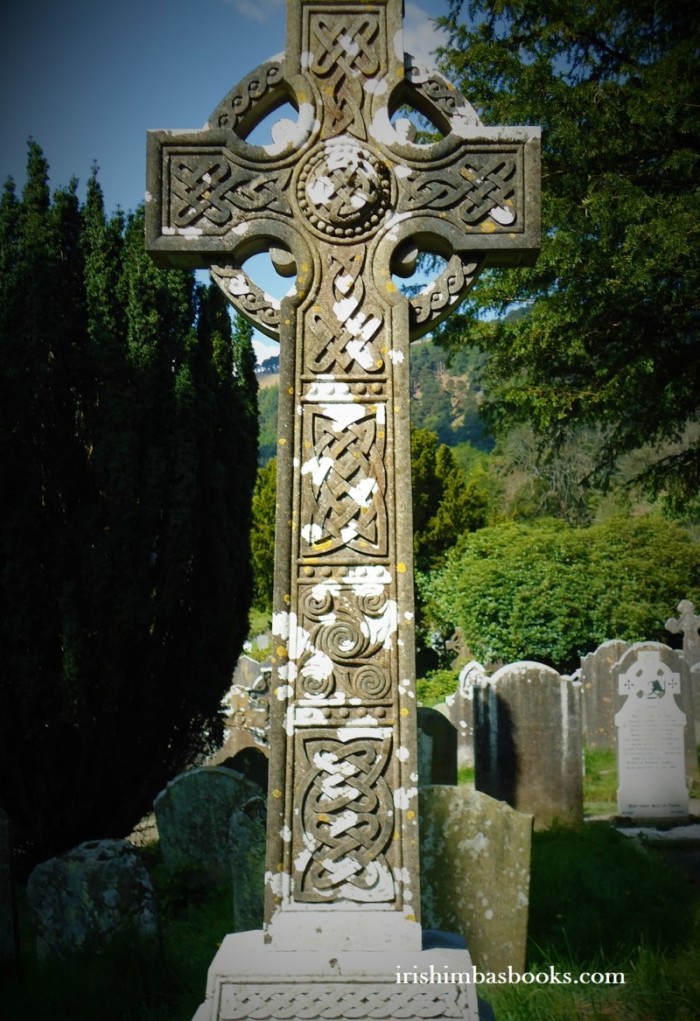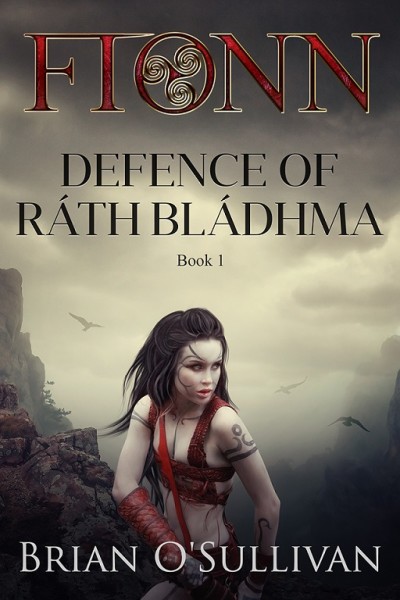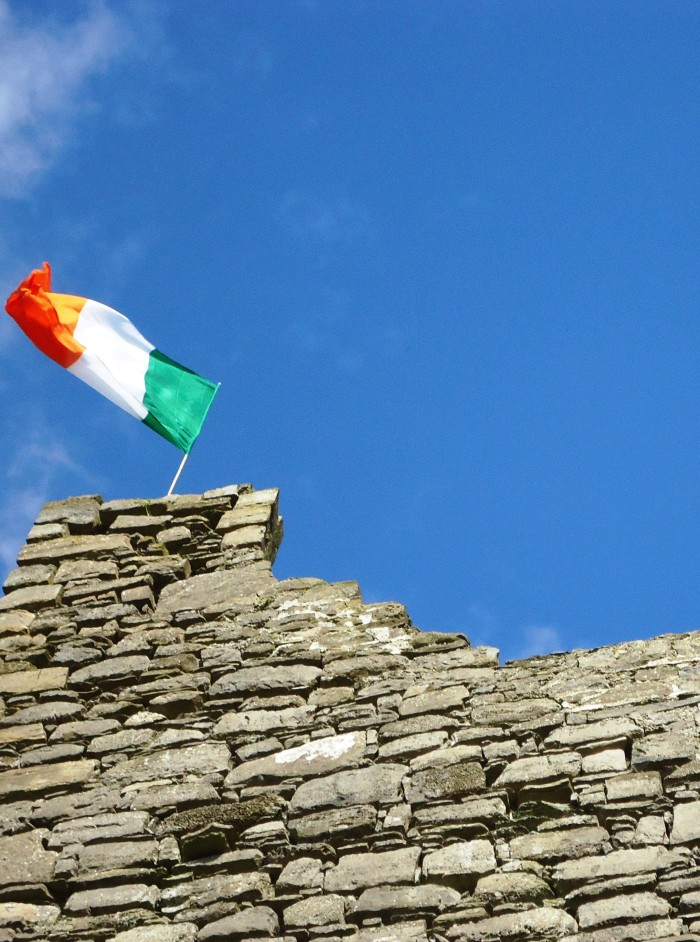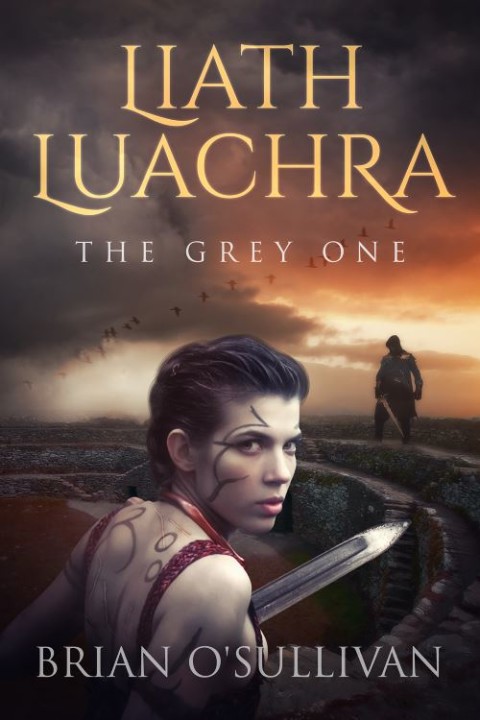

When people talk of 1985 in Ireland, a lot of them mention how awful the weather was that summer. Oddly enough, for me it was one of the brightest and sunniest summers I can recall. It’s all down to perspective, of course. In the summer of 1985, I was in Kinsale, a beautiful seaside town/ tourist centre on the Cork coast. Having completed my university exams (successfully, for once!), I’d been unable to find work (Ireland was in mid-recession at the time) and a result, I was living on my Dad’s boat on Kinsale marina. I had a whole summer of sailing, drinking and partying ahead of me and I was blissfully unaware of the storm blowing in from about five miles off to the south west, a storm that was about to set the country alight.
The story of the moving statues started in Ballinspittle one evening in July. I have memories of meeting a French girl I really liked so around that time so I was desperately preoccupied trying to win her affections. Over in Ballinspittle however, two local girls had just told their parents they’d seen a roadside statue of the Virgin Mary move while they were praying. Most people who’ve been to Ireland will be familiar with these roadside grottos and their statues of the Virgin Mary. There are hundreds of these statues dotting the country in all sorts of places as a result of the religious fervor during the Marian Year in the 1950s.
By late July, the French girl was well gone, continuing her tourist trip around Ireland. I consoled myself by sailing with my family at the Schull and Baltimore regattas and then returning to skim around Kinsale harbour on my Lazer (a very fast and fun one-man sailing dinghy). Most nights, I’d end up drinking at a friend’s house (or at my cousins) as I rarely had enough money to actually get to a pub. By then, people were already talking about the “Ballinspittle Miracle” and the small groups of four or five congregating around the grotto. By the time I got back from Schull a week or two later, the Cork Examiner was reporting on the matter at length. The one thing that really indicated how serious things were getting however, was the sudden and startling presence of a double decker bus on the tiny streets of Kinsale as it brought the faithful down from Cork city to see the miracle.
Looking back now, in many respects it seems strange that nobody really took notice or reacted to the event for such a long time. I guess, the truth is that most of us kind of took it for granted. Miracles weren’t exactly unheard of. In Ireland, we’d always been raised with tales of the miracle up at the Knock shrine in Mayo. My parents – and most of my friends’ parents – had visited Lourdes or Fatima at least once to see the miracle sites there. I don’t think my friends were ‘believers’ by any stretch of the imagination but our generation had been raised to adhere to the beliefs of those that preceded us. The interesting thing was that although we accepted their religious beliefs, we were never truly confronted with them (not, really). They were our parents’ “thing”, not ours and we were fortunate in that we had sufficient freedom that they didn’t really touch us as much.
In August, the country started to get a bit crazy when a Marian statue was reported moving at the grotto in Mount Melleray (County Waterford). The papers picked up the story and connected it with Ballinspittle and almost immediately, competing Marian statues started shifting at thirty other grottos around the country. Everybody was now talking about it – mockingly or fervently – and it was becoming a phenomenon that could no longer be ignored. A tangible religious fervor was picking up amongst the more fanatical believers although the developing sceptics movement was just as strong. Thousands of people had started to gather at Ballinspittle every Sunday, although it has to be said that not all of them were believers. A large proportion were going out of sheer curiosity, for the craic, or simply to take the piss (something not unheard of in Ireland).
Even at the time, feckless youth that I was, I remember being surprised that the Catholic Church were so silent on the whole matter, refusing to be drawn on whether this was a genuine miracle or not. Fortunately, I’d discovered the joys of sex by then. That and the sheer physical pleasure of skimming across the waves in the Kinsale’s outer harbour held much more appeal than discussing the theological strangeness of moving statues although the subject seemed impossible to ignore. At this stage, reports of moving statues were on the television every night and public opinion seemed to be polarised predominantly along the lines of:
- Yes, this is some kind of supernatural event and God is sending us a message (we’re just not exactly sure what it is)
- No, it’s all an illusion driven by religious hysteria
Keen to get in on the action, a group of scientists from University College Cork (the Psychology Department) declared that the visions were either optical illusions caused by staring at static objects too hard in the evening light or a general psychological and sociological reaction to the recession, the crippling unemployment, the wet summer (WTF? It’s raining?!). Given the fact that I was actually studying Science at University College Cork, I was immediately skeptical, although for no particularly strong reason. I ‘knew’ many of the scientific ‘experts’ (albeit more for their personal foibles than for their professional competence and when you know people in one light it’s hard to accept them in another). To be honest, I suppose that even back then I was something of a cynic. Personal experience with both groups meant that I distrusted the religious ‘experts’ just as much as I distrusted the scientific ‘experts’.
In September, the situation took a sharp turn off Bizzare Street to career precariously down Wierdo Avenue. Up in Culleens (County Sligo), another moving statue had been spotted and strange things had started to appear in the sky. People were reporting ‘red balls of fire’ and ‘lights descending from the sky’ and for a moment, attention switched away from Ballinspittle. One night, watching the Late Late Show, I saw an interview with some local boy talking wide-eyed about ‘angels in the sky’ (the actual interview can still be found here: http://oldportal.euscreen.eu/play.jsp?id=EUS_F2B237A5C9B1497786593EBDF0F4B31F).
Even then, I felt things were balancing precariously on the hysterical. Despite this, another two or three weeks passed without major event. Life went on. Leaving the freedom of Kinsale behind, I returned to University for another gruelling year of study and socialising. The weather grew colder, it rained more often. Slowly, but surely, the statues started to reclaim their immobile pedestals. Despite the transfer of attention to Sligo and the subsequent ‘statue fatigue’, crowds of people (markedly smaller) kept flocking to Ballinspittle but it was clear the party was drawing to a close.
On Halloween (October 31st), it all flared back to life again when the Ballinspittle statue was attacked by three men wielding axes and hammers. Destroyed in front of a number of praying onlookers, the men (led by a man called Robert Draper) were arrested by Gardaí and the ensuing court case filled the headlines for weeks. The three men were some opposing religious group who disbelieved in praying to false idols. Like all fanatics, rather than protesting or getting their own message across though peaceful means, they’d taken it upon themselves to ensure nobody else could pray to them either. Despite boasting publically of what they’d done, the men were never sentenced. This caused immense resentment but the response was remarkably restrained (apart from a number of broken windows at Draper’s home). Apparently, buoyed by success, Draper went on a roll smashing other statues and ended up doing six months in prison in 1987. Whatever you believe however, following the Draper attack, I’ve not heard of the Ballinspittle statue ever moving again. Things went all quiet and the resulting silence was ear-splitting.
Thirty years have passed since the whole Moving Statues event and yet, despite all the weirdness, the thing I find most striking is the total silence surrounding the topic since 1985. In some respects, it’s as though it never happened. Loathe to be ridiculed, few people are willing to discuss the subject (although there have been one or two small documentaries where the original witnesses were sticking strongly to their stories). To be honest, to this day, I still don’t completely understand the madness that overtook the country.
A few years ago, when I was back home I finally went down to the grotto in Ballinspittle. Ironically, despite everything (and the fact that I was living just a few miles up the road) I’d never actually got around to visiting the site of all the action. On two separate occasions, I’d actually been invited to join a group of friends going over to the statue for a ‘squizz’ but on both, I’d declined. The first time, because I was still chasing the French girl, the second because of more ‘generic’ party reasons. I’ve never really regretted either decision.
It was early morning when I got there. I’d driven over from Kinsale where I’d spent the night revisiting some old friends and some old haunts and I was in a melancholic state of mind. Conscious of the fact that my plane back to New Zealand was in two days time, I was feeling ‘homesick’ although in hindsight, I think it was a homesickness for my youth and the freedom I’d enjoyed in Kinsale rather than for my country.
The grotto is actually a pretty place that reminds me of my childhood, with its white balustrade and blue concrete letters reading “The Immaculate Conception”. The new statue has small electric bulbs around its head in the form of a halo. Because it was so early, there was no-one else around although I’m not sure if people still come here anymore. Before I hopped into the car to drive back to Cork, I looked up at the statue one last time, waved and shouted goodbye.
But it didn’t move.
























